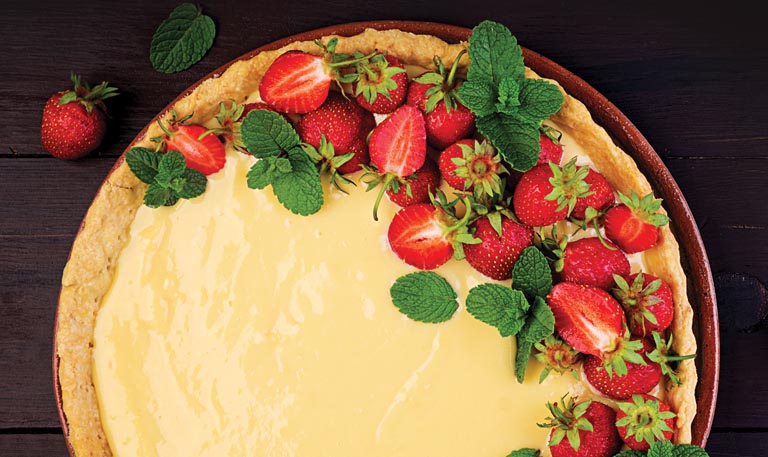Craig Claiborne, the venerable food critic and cookbook writer for the New York Times, wrote that we all love ‘nursery foods.’ Those would be the creamy, sweet, soft foods we associate with our childhood—or at least the childhoods of mid-20th century Americans. His point was well taken. I can’t hear the words “tapioca pudding” without my mouth watering. Same thing with “melted cheese.” From custards to whipped cream, we can count on feeling soothed and comforted when we encounter those foods, and they are often from our childhoods.
I am unashamedly conflating what we call “comfort foods”—macaroni and cheese, grilled cheese sandwiches dipped in tomato soup, mashed potatoes with butter and sour cream, meat loaf with ketchup—with foods we love. These dishes often show up as regulars on menus at places where people go to eat what makes them happy, not what makes them appreciate a chef’s talent.
Food as both expression and proof of love are ancient pairs. I am not talking about food as a substitute for love. (I think that is a particular 20th century aberration and one which many of us can relate to.)
I asked a friend what foods he loved. He started with a generic statement I couldn’t dispute: “Any well-prepared meal made with good ingredients and care.” Even so, I shut him down. “No! What do you love to eat, what makes you happy?” He laughed: “A really good sardine sandwich! A bowl of excellent congee!”
Absolutely.
When I want to feel happy, I make my favorite garlic potatoes with peas, melted cheese, and Indian lime pickle. I mash it all together. Each bite has its own hit of flavor. What’s more, I usually eat this by myself since I can’t count on anybody else joining me with same level of enthusiasm the mixture elicits from me. I also crave my cilantro salsa with its bright citrus tang.
I visited friends recently and was served “dump cake,” something never previously encountered. Turns out there is a whole range of dump cakes, recently revived—or never forgotten—examples of post WWII foods that were made with cans and boxed ingredients. My virgin experience with the category was the classic Cherry Dump Cake—canned pie cherries, yellow cake mix, a stick and a half of butter dotted on top. Baked, served warm with whipped cream. OMG! It hit all the pleasure receptors on my unsuspecting tongue.
Foods we love are often foods we have with the people we love on anniversaries or other holidays. We don’t care whether they are good for us or healthy or made with the freshest local ingredients. Canned pie fillings and cake mixes come from the Land of Labs—giant automated equipment spaces with people in white coats and shower hats. Okay, I made that up, but you know what I mean.
“Tasty Apricot Chicken” appeared in Joan Nathan’s first famous cookbook, Jewish Holiday Kitchen. It was simple and delicious (and embarrassing if you had been inspired by Julia Child or Marcella Hazan). Chicken thighs baked under a combination of Lipton’s Onion Soup mix, a bottle of Russian dressing, and either a jar of apricot jam or a can of whole cranberry sauce. I confess to not only serving it but sometimes telling guests it was a family favorite whose recipe was sworn to secrecy.
I am not suggesting we abandon all attempts at health and eco-consciousness. Rather, I am reminding us that feeling happy and love(d) are good for us. They release endorphins and oxytocin—our feel-good hormones. Who doesn’t need more of those?
So, I suggest you consider this premise: Think about what you really love to eat. When did you first have it? Who was it with? What were you doing? When, where, and with whom have you had it since? When can you have it again, and with whom do you want to share your stories?
Better yet, invite people you love now to bring the foods they love and make time for each person to tell their food-love stories. We can’t have too much love!
My recipes below could qualify as a complete meal. Add a green salad to round out the repast. I am happy to share all of them with guests!
Easy Sweet and Sour Sauce for Avocados
Most people have all these ingredients in their pantries.
- Cut 1 or 2 avocados in half, in slices or in chunks.
Sauce
Equal proportions (generally 1 Tablespoon each) of:
- Worcestershire Sauce
- Sugar
- White or cider vinegar
- Butter
- Ketchup
Heat in saucepan and serve in avocado halves or over avocado chunks or slices. This also makes a terrific warm dressing for spinach salads.
Rebecca’s Tarragon and Garlic Chicken
Ingredients:
- 4 to 6 chicken thighs, bone in, skin on
- 1 fennel bulb, sliced thinly
- 2 small packs of Trader Joe’s or other peeled garlic (20 cloves in total)
- 6 waxy potatoes, cut in quarters
- 1 jar marinated artichokes with its oil or 1 can artichoke bottoms
- 4 tbsp. olive oil
- ½–¾ cup dry vermouth
- Juice of 1 lemon
- 2 tbsp. freshly chopped Tarragon plus three whole sprigs
Directions:
-
- Preheat the oven to 375 degrees.
- Cover the bottom of a heavy 6-quart casserole with the fennel, potatoes, tarragon, and artichoke hearts.
- Rub the chicken with salt and olive oil.
- Place on top of vegetables, skin side up.
- Pour the vermouth over the chicken and sprinkle with pepper.
- Tuck the garlic around and between the chicken pieces.
- Cover the top of the casserole tightly with aluminum foil and fit the lid over the foil to create an airtight seal.
- Bake for 1 hour without removing the cover. Check for doneness.
- Uncover chicken and allow to brown for 10 minutes.
- Serve the chicken with the pan juices, vegetables, and garlic.
Serve with warm, garlic spread bread.
Buttermilk Pie
Ingredients:
- 2 eggs
- 2 tbsp. flour
- 1 cup sugar
- 1 stick butter, melted
- 1 cup buttermilk
- 1 tbsp. Vanilla
- Single 8-inch pie crust (a good quality frozen kind works just fine.)
Directions:
- Preheat oven to 350 degrees.
- Mix eggs, flour and sugar together, add vanilla, melted butter, and buttermilk and blend well.
- Pour into uncooked pie crust and bake at 350 degrees for 45 minutes to an hour until custard sets and knife comes out clean (the top should be nicely browned). Cool.
Serve with a dollop of whipped cream or some berries or peaches on the side.
Rebecca Crichton is executive director of Northwest Center for Creative Aging and presents programs on that topic in the Seattle area. She worked at Boeing for 21 years as a writer, curriculum designer, and leadership development coach. She has master’s degrees in child development and organizational development, and she is a certified coach.


